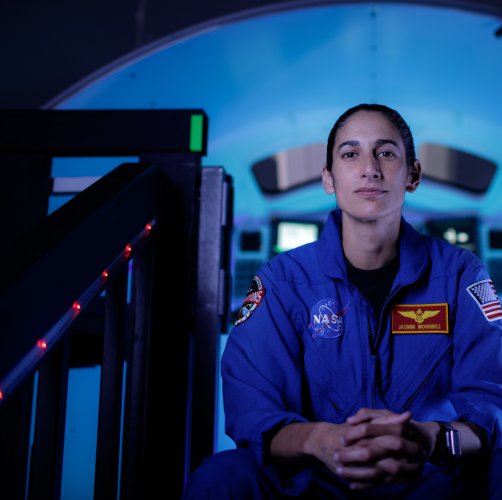1 of 3 | NASA's Space Launch System moon rocket, shown during recent fuel-loading tests at Stennis Space Center in Mississippi, is prepared for an eight-minute test firing Saturday. Photo courtesy of NASA
Jan. 15 (UPI) -- NASA plans to ignite one of the largest and most powerful rockets ever built, the Space Launch System core stage, for an eight-minute test firing Saturday.
Ignition of the moon rocket is planned for 5 p.m. EST at the Stennis Space Center in rural southern Mississippi. Huge clouds of steam are expected as the test stand will be cooled by over 300,000 gallons of water per minute to prevent equipment from overheating.
"The [rocket] is instrumented with over 1,400 sensors ... that will give a lot of valuable data at the end of our hot fire," Julie Bassler, a NASA project manager for the rocket system, said in a press conference earlier this week.
The sensors will tell NASA and Boeing, which built the core stage, how the rocket performed with pressure and temperature readings, among other data, Bassler said.
The test will consume over 700,000 gallons of supercooled propellant -- liquid nitrogen and liquid oxygen, she said.
NASA intends to refurbish the core stage and ship it to Kennedy Space Center in Florida in February, where the space agency plans to launch it on an uncrewed mission around the moon by November.
The core stage's four engines will fire with a total thrust of some 1.6 million pounds, compared to SpaceX's Falcon Heavy with total thrust of 3.4 million pounds at liftoff.
The core stage test won't include two solid rocket boosters that will be used for missions. Once those are added, the SLS rocket would have about 8.8 million pounds of thrust -- 15 percent more power than the Saturn V rocket that took astronauts to the moon during the Apollo era.
"It's a lot of power, but that's exactly what the test stand is built to do, as it did back in the Saturn days," Ryan McKibben, NASA's Green Run test conductor, said during the news conference.
About 300 people from Boeing and NASA were expected to be working at Stennis throughout the testing program.
"This is not a developmental or test article. It's the flight article that will power Artemis One around the moon, so we're being very careful with it as we go," said John Shannon, Boeing vice president and SLS program manager.
The first Artemis mission is part of NASA's plan to return astronauts to the moon by 2024, but that goal seems unlikely to be met. It was a priority of President Donald Trump's administration, but has not received the congressional funding NASA requested.
The SLS program is overbudget at more than $9 billion, according to an official report from NASA's Office of Inspector General.
Jasmin Moghbeli
Moghbeli poses for a portrait in the Systems Engineering Simulator for the International Space Station and advanced spaceflight programs at the Johnson Space Center on July 9, 2019. She will train for the moon mission. Photo by Bill Ingalls/NASA
















